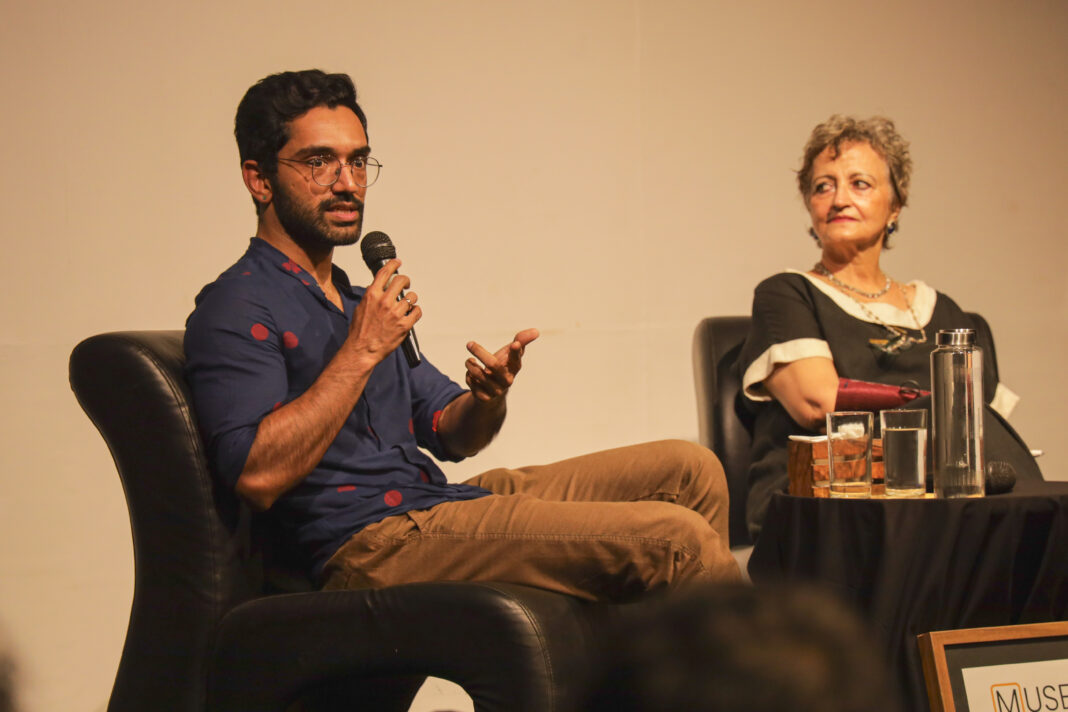Shirts, Shoes and Syncretism: Historian Manu S. Pillai Speaks at Museum of Goa
~ The humble shirt, the historian said, became a colonial symbol of education and aspiration.
~ British rulers had to wait for a long while before they were allowed to wear footwear in Indian royal courts.
Saligao: August 2025 – Shirts, shoes and slippers, usually regarded as unremarkable articles of daily use, became unlikely markers of class, authority and colonialism at a recent discussion at the Museum of Goa, in Pilerne, where noted historian and author Manu S. Pillai was in conversation with senior journalist and former Editors Guild of India president Seema Mustafa.
The event, titled ‘Faith Lines: Syncretism, Conflict and the Stories We Tell,’ examined how power and faith interact across time and how everyday practices continue to reflect hierarchies in contemporary times.
In the course of his talk, Pillai made a case for the humble shirt as a case of a colonialism-inspired aspirational piece of garment. “Why is it that I’m wearing a shirt?” he asked rhetorically. The shirt, he explained, entered Indian society through colonial influence and became a marker of education and aspiration. “It suggests you have a job, you’re not a peasant working in the field.” Even footwear, he added, carried caste and gender codes.
Manu S. Pillai is an Indian historian known for exploring India’s layered past and has authored various books, which include The Ivory Throne and Rebel Sultans.
His talk also covered the evolving relationship between British officials and Indian rulers in the eighteenth century. “Warren Hastings (former Governor-General of India) had to squat on the floor like all other Indians did in the court,” Pillai said, noting that the East India Company’s representatives were initially bound by local etiquette. Within decades, however, the British demanded chairs and the right to keep their shoes on. “In Hyderabad, it took them generations before a British resident was finally permitted to walk into the Nizam’s court with his shoes and that one act caused such tension that apparently the British had to keep their army ready (fearing the worst), not too far from the Nizam’s palaces.”
On the aspect of syncretism or amalgamation, Pillai argued that cultural mixing, though inadvertent, was often strategic. Missionaries in inland South India, lacking political patronage, adopted Hindu markers such as saffron robes, tikkas and sacred threads, he said. “They essentially brahminised Christianity,” he said. “They (early Christian missionaries in the South of India) were using the idea of syncretism as a way to dominate and change something about an existing culture in order to bring them into a broader cultural framework, perhaps against their will.”
To a question from Mustafa, who asked how difficult histories should be addressed without stoking fresh divisions. Pillai acknowledged the importance of confronting violence but cautioned against lifting events from their context. “Those communities have moved on,” he said. “Most people in this country are aware of violence in the past. They also know how to look beyond it,” the historian added.
Image 01: (Left to right) Historian Manu S. Pillai in conversation with Seema Mustafa during the thought-provoking ‘Faith Lines: Syncretism, Conflict and the Stories We Tell,’ talk at the Museum of Goa, in Pilerne.




